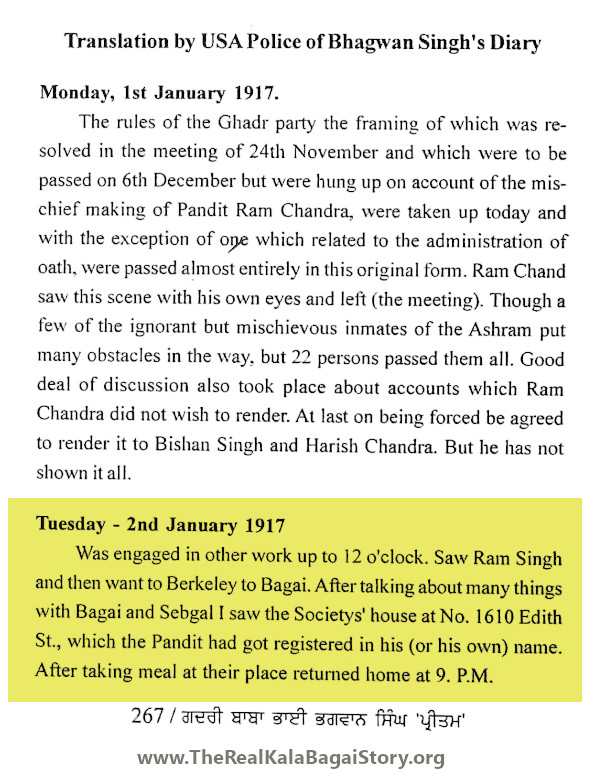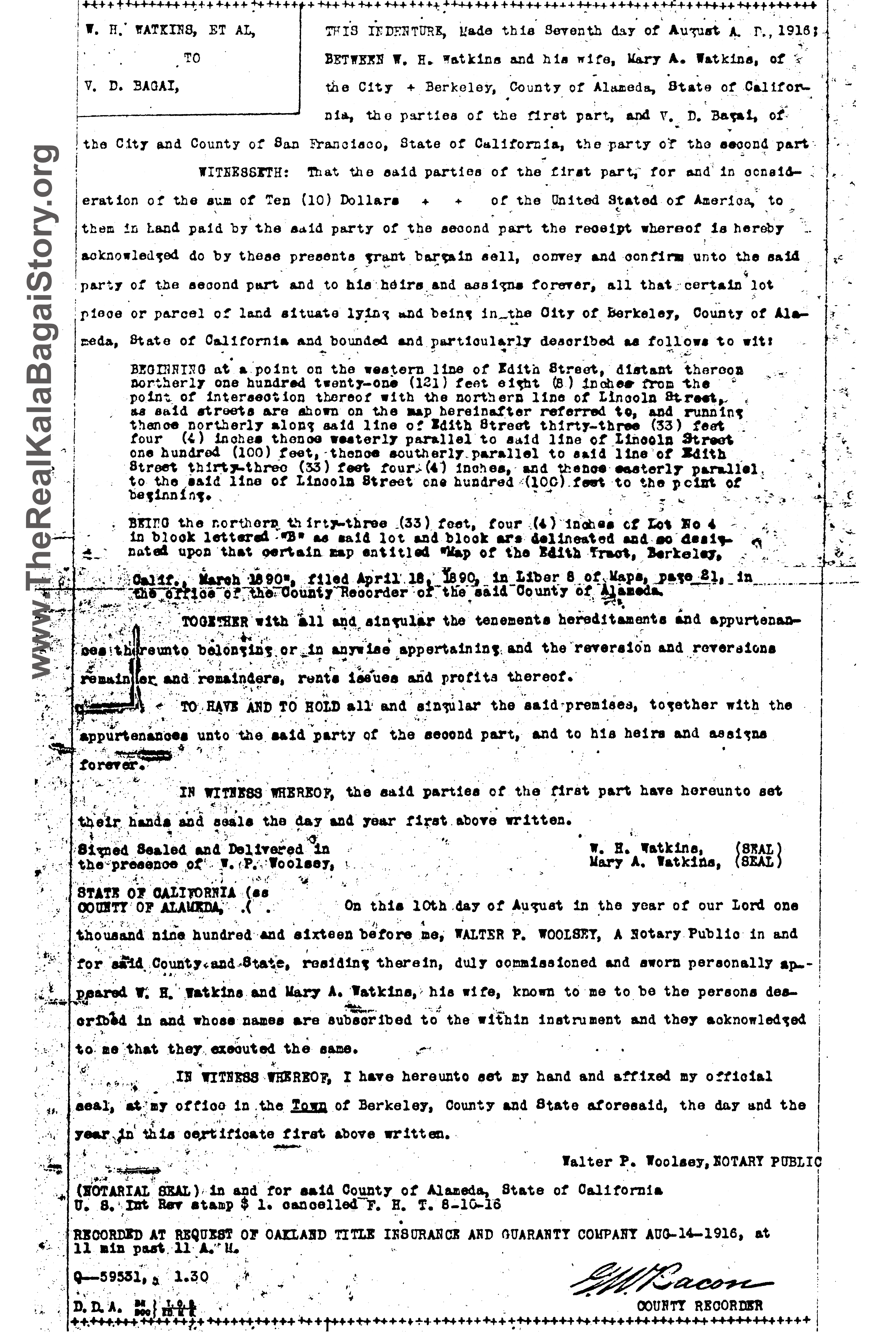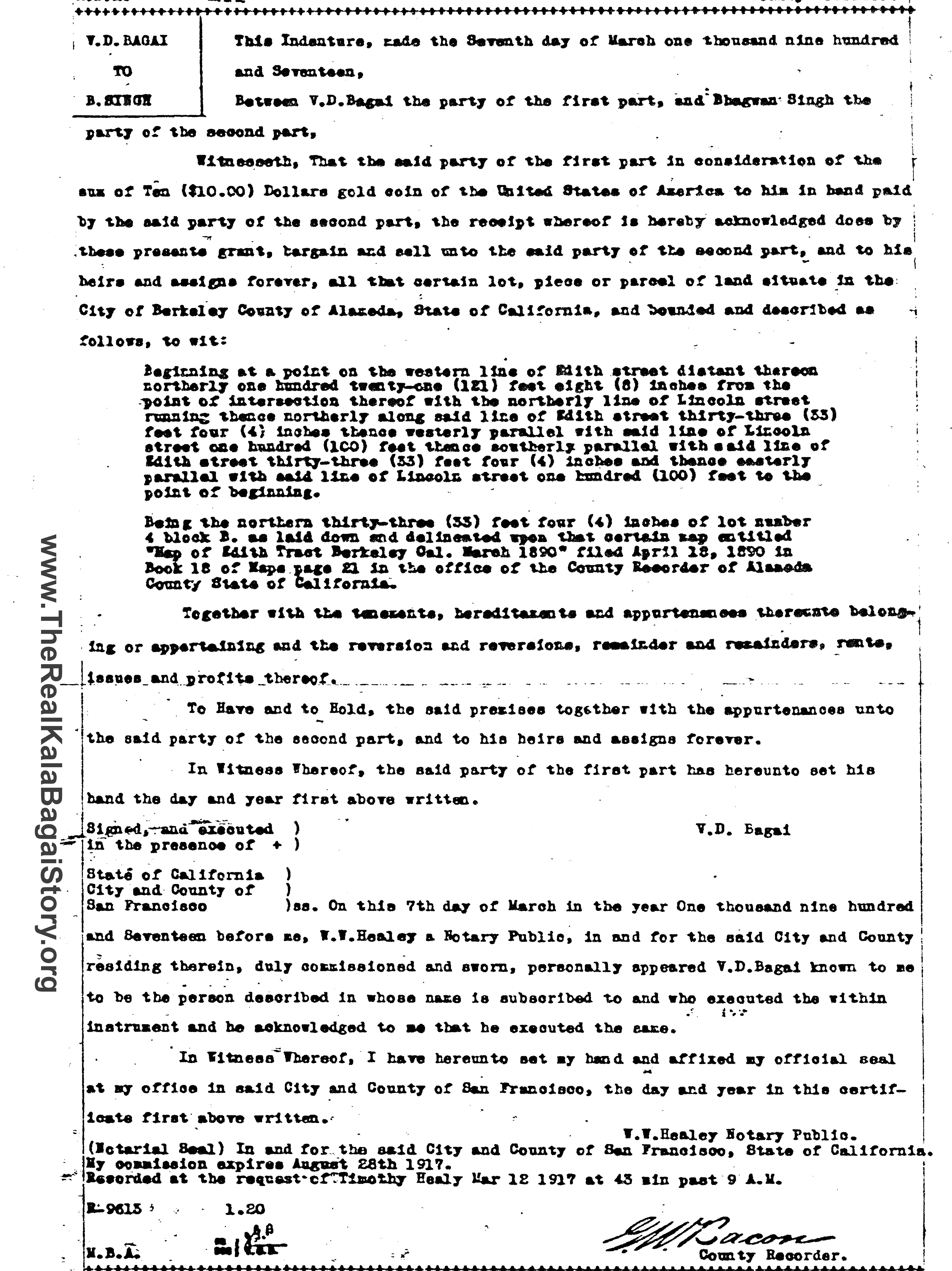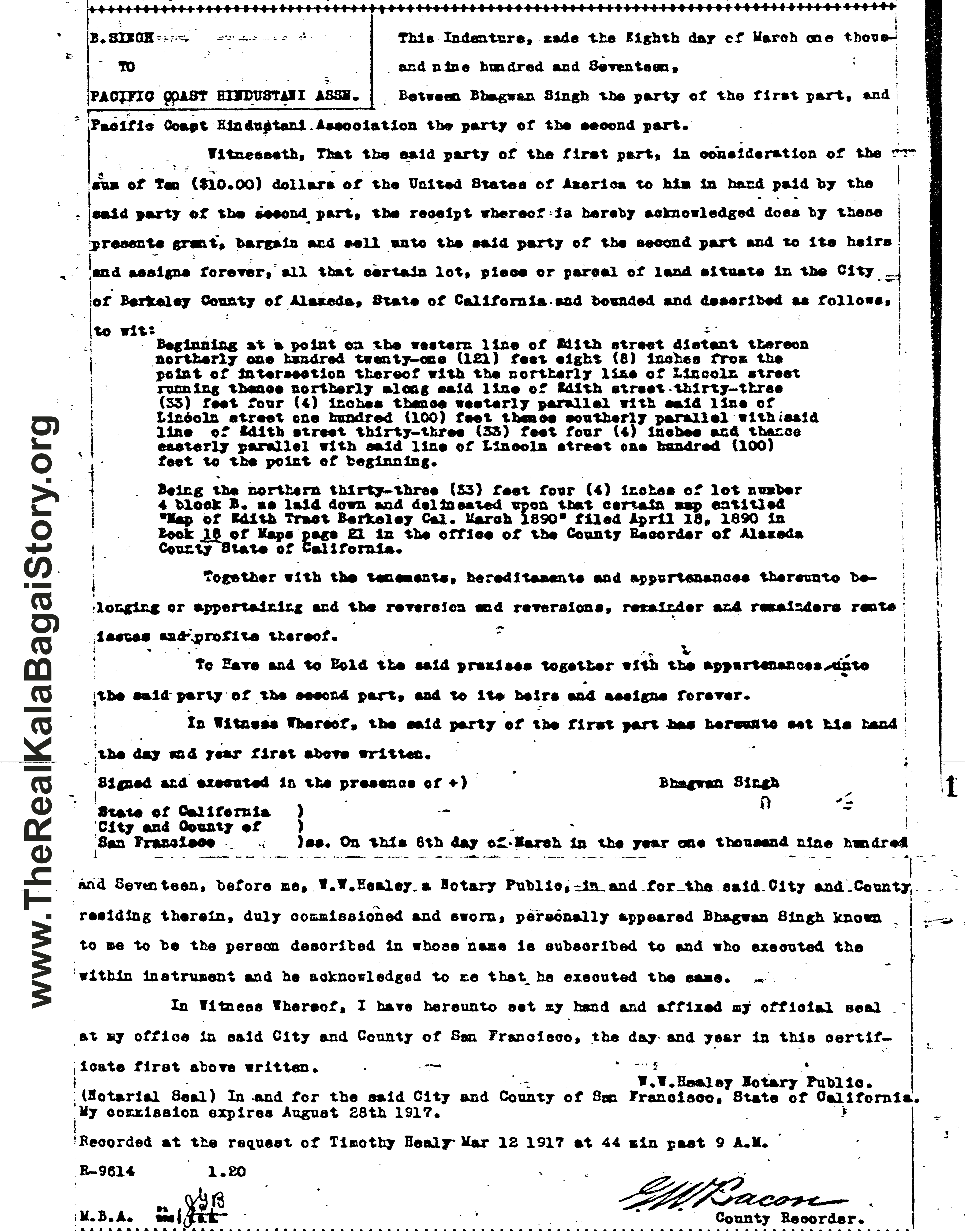Discovery of 1610 Edith St, Berkeley home purchase by Mr. Bagai with Ghadar Party funds

Between August 1916 and March 1917, Vaishno Das Bagai exploited his trusted position within the Ghadar Party to divert revolutionary funds—donated by Indian immigrants fighting for India's liberation—into his personal bank accounts. Rather than securing these funds for party operations, Bagai collaborated with party leader Ram Chandra to hide financial traces that could implicate Chandra himself.
Using the misappropriated money, Bagai purchased a residential property at 1610 Edith Street in Berkeley, an act disguised as party business. This maneuver is verified in a diary1 entry by then-Ghadar Party President Bhagwan Singh Gyanee, who unknowingly visited what he believed to be a movement-owned house on January 2, 1917. Real estate records research, at Alameda County Assessor's Office, reveal the property was bought by V.D. Bagai from Watkins on August 7, 19162, and was not deeded to the Pacific Coast Hindustani Association until March 8, 19173—after mounting suspicions within the party. This sequence of events provides crucial evidence of Bagai's financial misconduct and betrayal of the revolutionary movement he claimed to support.
Alameda County Assessor’s Office Property Records

Purchase of 1610 Edith St from Watkins by Bagai
August 7, 1916 - Bagai purchases property using misappropriated Ghadar Party funds

Transfer of 1610 Edith St from Bagai to B Singh
March 7, 1917 - Property transferred to Bhagwan Singh Gyanee

Transfer of 1610 Edith St from B Singh to Ghadar
March 8, 1917 - Property finally deeded to Pacific Coast Hindustani Association
This sequence provides direct evidence of Bagai's role in the embezzlement of revolutionary funds—money selflessly donated by working-class Indian immigrants who faced racism, economic hardship, and systemic discrimination, in stark contrast to Bagai's own affluent position.
Why Bagai surrendered the property to Bhagwan Singh Gyanee?
A deeper rift between Bagai and Ram Chandra may have emerged when Chandra allegedly discovered Bagai's ties to British intelligence. In what appeared to be a calculated attempt to protect himself, Bagai disclosed the property purchase to Bhagwan Singh Gyanee—possibly to regain trust and avoid being exposed as a British informant.
Tensions escalated when Ram Chandra publicly accused Bagai of being a spy during a Ghadar Party meeting. Though Bagai vehemently denied the charge4, the confrontation revealed a fracture in their alliance—and cast lasting doubt on Bagai's loyalty at a pivotal moment in the struggle for Indian independence. Beyond the Edith Street transaction, additional research is necessary to determine whether other properties acquired by Mr. Bagai were similarly financed with misappropriated Ghadar Party funds.
Conclusion
Kala Bagai's silence on her husband's embezzlement of Ghadar Party funds may have been a strategic choice—an effort to preserve her family's dignity and shield her children from public shame. Yet this omission has had lasting consequences. Similarly, the Berkeley South Asian Radical Historians collective, in their street renaming campaign, either overlooked or intentionally masked this critical aspect of her story. By excluding documented evidence of Vaishno Das Bagai's betrayal of the revolutionary movement, they presented a sanitized narrative that raises serious questions about historical accountability and the ethics of public commemoration.
References
-
1. Dr. Sidhu, Gurdev Singh & Singh, Surinderpal Gadri Baba Bhai Bhagwan Singh
Pritam 2013
Chandigarh: Unitstar, 2013; pp 267 -
2. Alameda County Assessor's Office. Deed to 1610 Edit St, Berkely. August 7,
1916
Digital Database : Reel -
3. Alameda County Assessor's Office. Deed to 1610 Edit St, Berkely. March 8,
1917
Digital Database : Reel -
4. Bagai, Ram. "Letter regarding Vaishno Das Bagai" South Asian American
Digital Archive (SAADA)
January 24, 1989. https://www.saada.org/item/20130508-2732